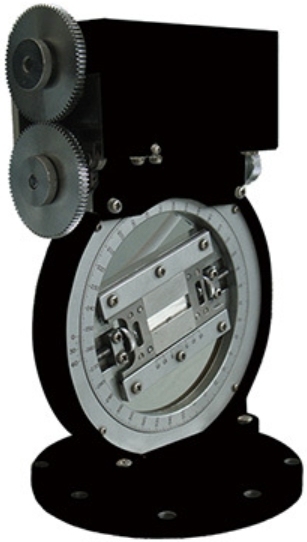
News
Fiber accessories are tested for their unique crystal structure using X-ray diffraction (transmission) method. Test the orientation of the sample based on data such as fiber crystallinity and half peak width. A specialized component used for analyzing fiber materials such as textiles, polymer fibers, biological fibers, etc. It is commonly used to study the crystal structure, orientation, and molecular arrangement of fibers. Main functions of fiber accessories: 1. Fiber sample fixation: Fiber accessories are used to fix the fiber sample, ensuring its position and direction stability in the X-ray beam. 2. Fiber orientation analysis: By adjusting the position and angle of the sample, the crystal orientation and molecular arrangement of the fibers are studied. 3. Small angle X-ray scattering (SAXS): Some fiber attachments support SAXS for analyzing the nanoscale structure of fibers. Common types of fiber accessories: 1. Fiber stretching device: It can apply tension to fibers during XRD analysis to study structural changes under stress. 2. Rotating sample stage: allows fiber samples to rotate, facilitating the collection of diffraction data from different angles. 3. Temperature control accessories: used to analyze fiber materials at specific temperatures and study the effect of temperature on structure. Application fields of fiber accessories: 1. Materials Science: Study the crystal structure and mechanical properties of synthetic fibers such as nylon and polyester. 2. Biomaterials: Analyze the structure of natural fibers such as collagen and cellulose. 3. Textiles: Evaluate the orientation and crystallinity of textile fibers. Steps for using fiber accessories: 1. Sample preparation: Fix the fiber sample onto the attachment. 2. Adjust parameters: Set the X-ray source, detector, and sample positions. 3. Data collection: Collect diffraction patterns. 4. Data analysis: Use software to analyze diffraction data and obtain structural information. Matters needing attention: -Sample alignment: Ensure that the sample is accurately aligned with the X-ray beam. -Parameter optimization: Optimize X-ray energy, exposure time, etc. based on sample characteristics. -Data quality: Ensure clear diffraction patterns and avoid noise interference. Our company provides on-site training on instrument usage and related industry knowledge, as well as subsequent analysis software usage and maintenance, and complete machine maintenance services.
The TDM-20 Benchtop X-ray diffractometer uses a new high-performance array detector, and the loading of this detector has greatly improved the overall performance of the machine. The TDM-20 Benchtop XRD is mainly used for phase analysis of powders, solids, and similar paste like materials. The TDM-20 Benchtop X-ray diffractometer utilizes the principle of X-ray diffraction to perform qualitative or quantitative analysis, crystal structure analysis, and other polycrystalline materials such as powder samples and metal samples. Benchtop XRD is widely used in industries such as industry, agriculture, national defense, pharmaceuticals, minerals, food safety, petroleum, education, and scientific research.
The TD-3700 high-resolution X-ray diffractometer is equipped with a variety of high-performance detectors such as high-speed one-dimensional array detectors, two-dimensional detectors, SDD detectors, etc. TD-3700 X-ray diffractometer integrates fast analysis, convenient operation, and user safety. The modular hardware architecture and customized software system achieve a perfect combination, making its failure rate extremely low, anti-interference performance good, and ensuring long-term stable operation of high-voltage power supply. TD-3700 X-ray diffractometer can increase the diffraction calculation intensity by tens of times or more, obtain complete high-sensitivity, high-resolution diffraction patterns and higher counting intensity in a shorter sampling period, and also support transmission data scanning. The resolution of transmission mode is much higher than that of diffraction mode, which is suitable for structural analysis and other fields. Diffraction mode has strong diffraction signals and is more suitable for routine phase identification in the laboratory.
The parallel optical film measuring accessory increases the length of the grating plate to filter out more scattered lines, which is beneficial for reducing the influence of the substrate signal on the results and enhancing the signal intensity of the film.
Fiber accessories are tested for their unique crystal structure using X-ray diffraction (transmission) method. Test the orientation of the sample based on data such as fiber texture and half peak width.
The TDF series X-ray crystal analyzer is a large-scale analytical instrument and X-ray instrument used to study the internal microstructure of materials. It is mainly used for single crystal orientation, defect inspection, determination of lattice parameters, determination of residual stress, study of the structure of plates and rods, study of the structure of unknown substances, and single crystal dislocations.
The TD-5000 X-ray single crystal diffractometer is mainly used to determine the three-dimensional spatial structure and electron cloud density of crystalline substances such as inorganic, organic, and metal complexes, and to analyze the structure of special materials such as twinning, non commensurate crystals, quasicrystals, etc. Determine the accurate three-dimensional space (including bond length, bond angle, configuration, conformation, and even bonding electron density) of new compound (crystalline) molecules and the actual arrangement of molecules in the lattice; It can provide information on the crystal cell parameters, space group, crystal molecular structure, intermolecular hydrogen bonding and weak interactions, as well as structural information such as molecular configuration and conformation. X-ray single crystal diffractometer is widely used in analytical research in chemical crystallography, molecular biology, pharmacology, mineralogy, and materials science. Single crystal XRD is a high-tech product under the National Major Scientific Instrument and Equipment Development Project of the Ministry of Science and Technology, led by Dandong Tongda Technology Co., Ltd., filling the gap in the development and production of single crystal x-ray diffractometer in China.
Powder X-ray diffractometer is mainly used for phase qualitative and quantitative analysis, crystal structure analysis, material structure analysis, crystal orientation analysis, macroscopic or microscopic stress determination, grain size determination, crystallinity determination, etc. of powder, block or film samples. The TD-3500 X-ray diffractometer produced by Dandong Tongda Technology Co., Ltd. adopts imported Siemens PLC control, which makes the TD-3500 X-ray diffractometer have the characteristics of high accuracy, high precision, good stability, long service life, easy upgrade, easy operation and intelligence, and can flexibly adapt to testing analysis and research in various industries!
The TD-3700 X-ray diffractometer is a high-performance and multifunctional X-ray diffractometer produced by Dandong Tongda Technology Co., Ltd. The main features are high-performance detectors, diverse scanning methods, convenient and safe operation, stable and reliable performance. For specific details, please refer to the website of Dandong Tongda Technology Co., Ltd.
The medium and low temperature accessory is designed to understand the changes in crystal structure during the low-temperature refrigeration process.










